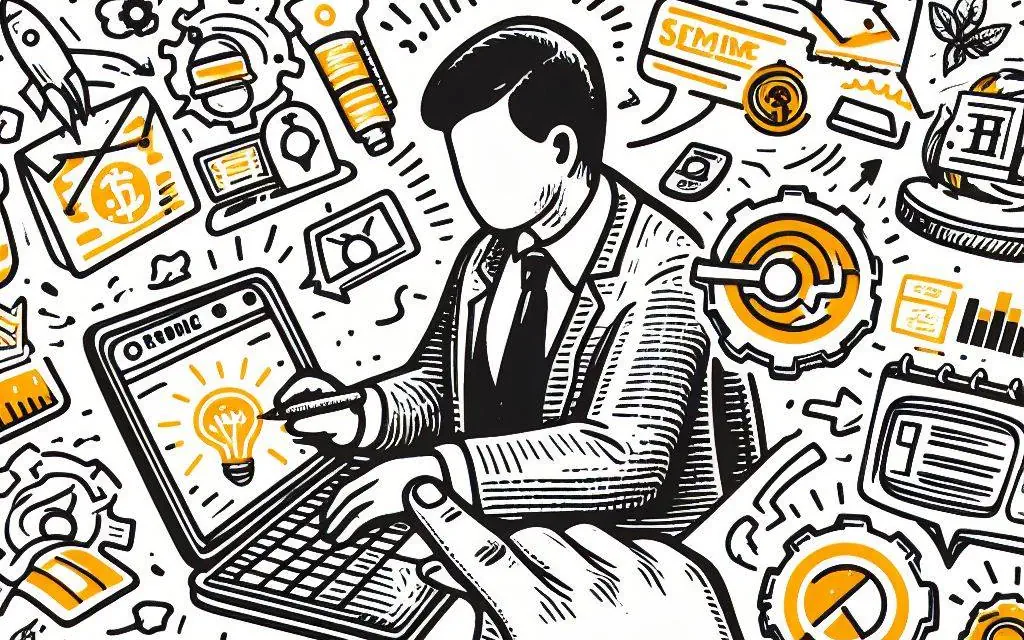 illustration: Bing AI
illustration: Bing AIPoles spend more and more time on the Internet. A report prepared by Nexera analysts shows that every adult user spends an average of 6 hours a day online. Compared to data from two years ago, this is an increase of 15%. Interestingly, young people aged 16–24 spend as much as 9 hours a day online. This intensity affects lifestyles, from interpersonal relationships to how knowledge is acquired.
Internet users value fast access to information. A full 85% of respondents indicate that the Internet is their primary source of knowledge and entertainment. Most respondents report using the Internet on at least three devices – a smartphone, a laptop, and a smart TV. The report also shows that people from smaller towns spend slightly less time online, often due to technical limitations.
- 6 hours – average daily Internet usage time.
- 9 hours – average for youth aged 16–24.
- 85% see the Internet as the main source of information.
Entertainment as a Priority
Digital entertainment attracts more Poles. The Nexera report indicates that 72% of Internet users regularly use streaming platforms like Netflix, Spotify, or Disney+. A 10% increase compared to last year shows that on-demand content is becoming the standard. Movies and series are the most popular choices, but podcasts and sports broadcasts are also gaining popularity.
A surprising trend is the growing number of online gamers. One in three Poles regularly plays games, most often on smartphones. Arcade and strategy games, as well as e-sports platforms like Twitch, are increasingly popular. Research shows that younger generations often treat gaming as a way to connect with friends.
| Type of Entertainment | Percentage of Users |
|---|---|
| Movies and Series | 72% |
| Online Games | 33% |
| Podcasts and Audiobooks | 25% |
E-Commerce: Digital Shopping Revolution
Online shopping is becoming increasingly important, as confirmed by the RegionyNEXERY report. Already 70% of Internet users shop online at least once a month. The most frequently purchased products are clothing, electronics, and groceries. Many people are turning to online grocery shopping thanks to the convenience of on-demand delivery.
International platforms like AliExpress and Amazon are gaining an increasing share of the Polish market. A full 25% of respondents report using these services to find lower prices or hard-to-find goods.
- 70% of Internet users shop online at least once a month.
- 40% shop online every week.
- 25% use international shopping platforms.
| Category | Percentage of Buyers |
|---|---|
| Clothing | 65% |
| Electronics | 45% |
| Groceries | 30% |
| Cosmetics | 25% |
Work and Education Online
The Internet is changing how we work and learn. The Nexera report shows that 55% of Poles use remote work, at least in a hybrid model. Most cases involve the IT, marketing, and education sectors. Remote work is also becoming popular in smaller towns, where new technologies level the playing field for job opportunities.
Digital education is gaining more recognition. A total of 45% of students use educational platforms like Moodle or Teams. Interviews with survey participants show that such tools allow learning to be tailored to individual needs.
- 55% of workers use the hybrid model.
- 70% cite flexibility as the main advantage of remote work.
- 45% of students use digital educational platforms.
60% of digital creators do not verify information before publishing 👇
Increased Use of AI and Digital Public Services
Artificial Intelligence (AI) is becoming increasingly significant in daily life. The RegionyNEXERY report shows that 30% of Poles regularly use AI solutions. These include voice assistants, content personalization apps, and data analysis tools. AI also supports companies in recruitment and marketing processes.
Digital public services have seen significant growth. A total of 60% of respondents use applications like mObywatel or e-prescriptions at least once a month. New features allow for submitting government forms without leaving home. This solution is particularly appreciated by older adults and residents of small towns, where traveling to government offices can be challenging.
- 30% use voice assistants like Alexa or Google Assistant.
- 60% regularly use e-prescriptions.
- 25% submit government forms online.
Technologies of the Future
The "Regiony NEXERY 2024" report also highlights the growing interest of Poles in new technologies. As many as 48% of respondents declare using IoT (Internet of Things) devices in 2024, such as smartwatches, smart home systems, or safety sensors. Compared to the previous year, this is an increase of 9%.
The study was conducted in September 2024 using the CAWI method (Computer Assisted Web Interview) on two survey samples (a total of 2,654 interviews). The full content can be read on https://regionynexery.pl/raport-2024/
COMMERCIAL BREAK
New articles in section Media industry
Advertising market 2025. Poland, Europe and the World
Marcin Grządka
The global advertising market is growing by 8.8% in 2025 and will reach a value of 1.14 trillion dollars. The industry result in Europe records slightly lower dynamics, at the level of 5.8%. In this comparison, Poland performs clearly above the average. We will record an increase of 8.9% this year and a value of 18.56 billion PLN - estimates WPP Media in the annual report "This Year Next Year".
The print media market 2025. Three global trends
Krzysztof Fiedorek
The market value is 359.53 billion dollars, yet the erosion is visible to the naked eye. The decline for newspapers will amount to -2.3 percent. Despite this, print retains strength: it generates 76 percent of subscription revenues and enjoys 82 percent consumer trust. The future of the industry is defined by hybrid strategies and niche specialization.
Journalism in the age of AI. Why people prefer humans over machines
Krzysztof Fiedorek
Only 12% of people accept news created solely by AI, while 62% prefer those written by humans. At the same time, only 19% notice labels indicating the use of artificial intelligence, while younger audiences ask AI to explain the content to them. These are the findings of the Reuters Institute report on artificial intelligence in media.
See articles on a similar topic:
E-commerce Forecasts in Poland. Trends for 2024 and Beyond
Krzysztof Fiedorek
In 2024, e-commerce in Poland is reaching new heights, with an increasing number of consumers regularly shopping online. The report "E-shopping Habits of Poles 2024," prepared by SAMOSEO analysts, analyzes current trends and forecasts the industry's near future.
Influencers Earn Too Much. No Fluff Jobs Report
KrzysztoF
According to nearly 70% of Poles, influencers earn too much, and 54% feel the least affection for them out of all professions. Only politicians receive equally low regard among respondents surveyed by No Fluff Jobs. On the other hand, nurses and… farmers are considered underpaid.
Repression Against Media: Committee to Protect Journalists Report for 2024
Krzysztof Fiedorek
In 2024, at least 361 journalists worldwide were imprisoned, often for exposing the truth. In China, reporters are tracked using advanced facial recognition systems, in Israel, Palestinian journalists are jailed without trial, and in Myanmar, journalist Shin Daewe received a life sentence for... a drone.
Gen Z Will Force Brands to Tell the Truth. GWI Report and Forecasts
Krzysztof Fiedorek
They value authenticity and brand transparency, preferring socially engaged companies. Young people see technology as a tool for growth, not just entertainment. In relationships, they prioritize genuine connections despite being highly active online. What do we know about Gen Z, and what does this mean for marketing? And beyond.





























